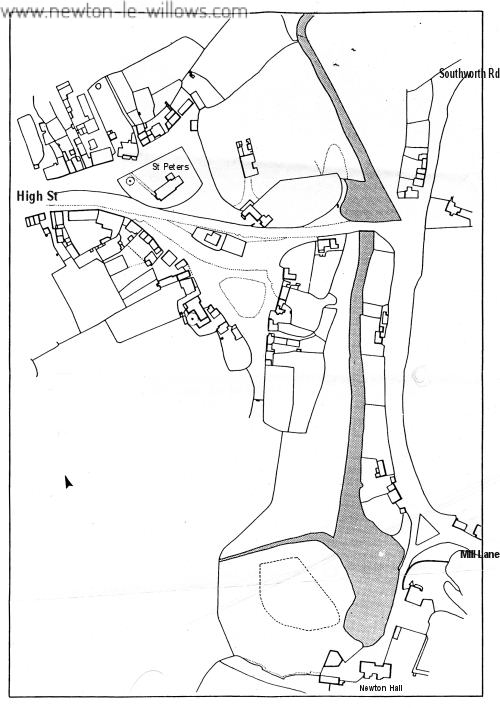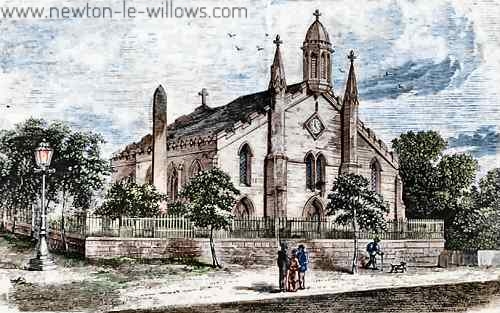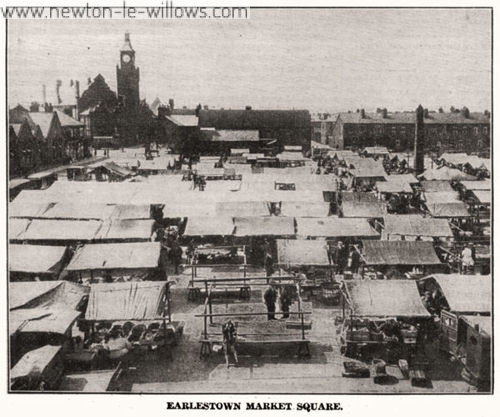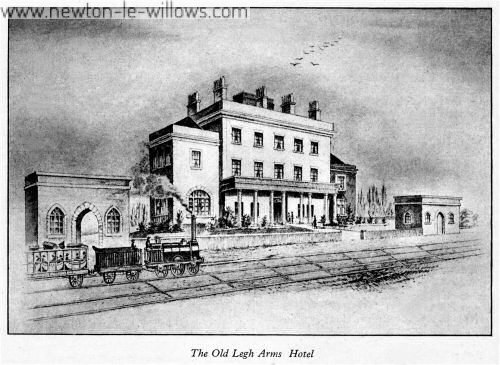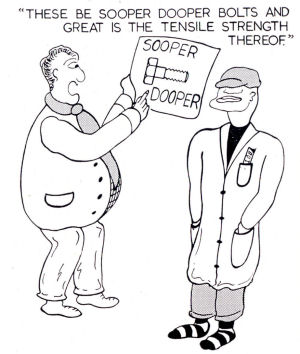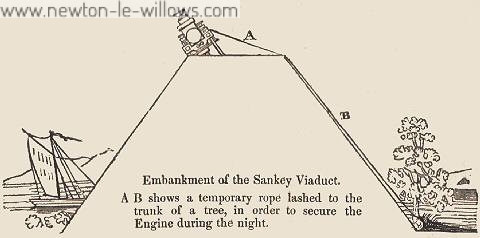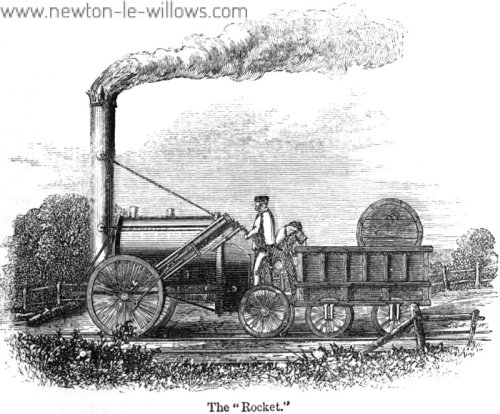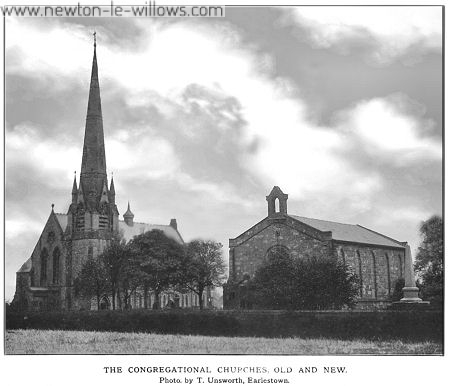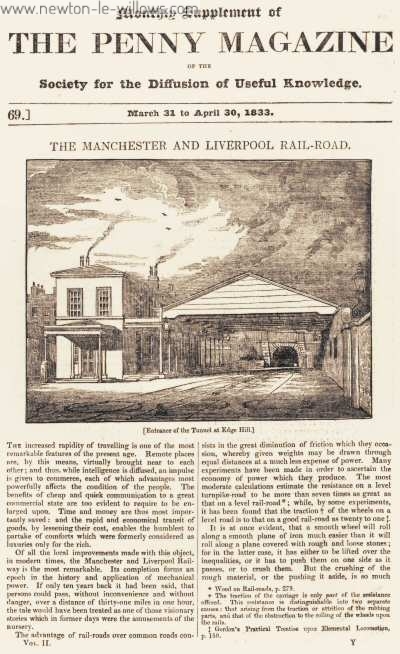At this period the wages of an agricultural labourer were 10d per day without food, and 5d if his master provided him with meals. Carpenters and masons received ls 6d per day. The wants of the people, however, were few, and food was cheap, and a shilling had greater purchasing power than it has in the present day. In the early part of the 18th century the manufacture of woollens and of silk was encouraged, to the detriment of cottons and calicoes, and made rapid strides. Probably about this time…
Read More >>Tag: Newton-le-Willows
Newton-in-Makerfield : yr 1825-35
NEWTON IN MACKERFIELD. NEWTON IN MACKERFIELD is a small Borough Town and Chapelry in the Parish of Winwick, and in the Hundred of West Derby; 5 miles N. of Warrington, and 7 miles S. of Wigan. This Borough contains 275 houses, occupied by 289 families, consisting of 1643 persons. Of these families 56 are employed chiefly in agriculture, 221 in trade,” manufactures, or handicraft, and the remaining 13 are either engaged in professional pursuits or unemployed. The rental of the lands, messuages, and other buildings in the township, according to…
Read More >>Newton – The Market and Fairs
In 42nd Henry III. (1258), Robert Banastre, the fourth baron of that name, obtained the Kings charter for a fair and market at his manor of Newton . Forty-three years afterwards a market and two fairs were granted by Edward I. to John de Langton – the market to be held every Saturday, and the fairs on the eve,day, and morrow of St. John (6th May) and of St. Germain (31st July). In 1536 the former was described by Leland (King Henry VIII.s antiquary) as “a little poore market.” This…
Read More >>McCORQUODALE & CO. LTD. 1846-1937
THE following appeared in a newspaper published in 1846: “The capacious building at Newton, on the north side of the Liverpool and Manchester Railway, known until recently as the “Legh Arms Hotel” is being converted into a general printing office.” A printing office in a village like Newton, however humble in pretension, a year ago would have been considered one of the greatest wonders of the age. Wonders do, however, occasionally appear, and one of the greatest we Know of is the conversion in such a place, of a building…
Read More >>Newton, 1800 & 1834
NEWTON, LANCASHIRE. Newton, commonly called Newton in the Willows, is five miles from Warrington, seven from Wigan, IS from Preston, 45 from Lancaster, and 1SS from London, in the road from Warrington to Wigan. It is an ancient borough by prescription, governed by a steward, bailiff, and burgesses, and returns two members to Parliament. The right of election is supposed to be in the burgesses, though there is no resolution of the House of Commons respecting it. The steward of the lord of the manor and the bailiff are the…
Read More >>The Fable of the Inspector and the Bolts
VULCAN MAGAZINE , Autumn 1958 THE FABLE OF THE INSPECTOR AND THE BOLTS There dwelt in the City of Newt an Inspector of a Factory, and his Chief spake unto him saying:- “Lo, there is in the wilderness of Vul a maker of bolts, and he has made two score and five special bolts. These be Sooper-Dooper bolts and great is the tensile strength thereof, that they may fix, even the very top of a cylinder casing, even unto the very bottom. Get thee hence and inspect them. And take…
Read More >>Sankey Viaduct Train Derailment
LIVERPOOL AND MANCHESTER RAILWAY?FURTHER PARTICULARS. Performance of the Engines. It has been stated in several of the newspapers, by way of apology for the delay which took place in the re-turn of the rear division of the pro-cession from Manchester on the day of the opening, that it arose from an apprehension that, as night had come on, accidents might have arisen from proceeding at a more rapid rate. The authors of this apology forget that at the same time the night came on the expectant crowds went off, and…
Read More >>James Muspratt (1793 – 1896)
James Muspratt was born in Dublin on the 12th August, 1793; his father was an Englishman, whose brother was a director of the East India Company; his mother, who was a remarkable woman of fine character and culture, was a Miss Mainwaring, one of the Cheshire family of that name. They resided in Dublin, and to a commercial school in that city sent their son. At fourteen years of age he was taken from school and apprenticed to a Mr. Mitcheltree, a wholesale chemist and druggist, in Dublin, with whom…
Read More >>Newton-le-Willows Official Guide
click the image to open up a new window with the copy of the 1960s map from the guide The East Lancashire Liverpool to Manchester road passes within a few hundred yards of the northern boundary of the Urban District (four main roads communicating between Newton-le-Willows and this, important arterial road) and the Warrington to Wigan trunk road, leading on to Preston and the North, passes through it. Newton-le-Willows is six and a quarter miles from Warrington, eight miles from Wigan and four and a half miles from St. Helens.…
Read More >>Locomotives or Stationary Engines
In November 1828 a report on the question of whether it would be better to work the Liverpool and Manchester Railway by stationary engines or by locomotives, was sent to George Stephenson, by the directors of that railway, these letters which I have transcribed are the replies, sent by George Stephenson and his son Robert to the report and other questions. Allthough not strictly Newton History, It shows the behind the scenes politics at a time, Imagine the course Newtons History would have run if the trains had been pulled…
Read More >>Congregational Church on Crow Lane
Whilst the old Congregational Church on Crow Lane is being rebuilt into apartments, I thought this would be the right time, to add into the website some of the information I have about it, from various sources. The Congregational Church (new), Crow Lane, c1915The first recorded preaching of the Gospel, in Newton, by a Congregational minister is given in the “Memoirs of the Rev. William Alexander,” written by his son, the Rev. John Alexander, Minister of Princes Street Chapel, Norwich, and published, in 1856, by Fletcher and Alexander of that…
Read More >>Newton-in-Makerfield: P.Mannex & Co. 1871
Newton in Makerfield Is a populace and rapidly – improving locality, containing several important industrial and manufacturing establishments. The town of Newton consists chiefly of one long and broad street, pleasantly situated on a gentle eminence, and commanding extensive and panoramic views. It is about five miles from St. Helens, seven from Wigan, and near the important Railway Station of Newton Bridge. The extensive printing establishment of Messrs. McCorquodale is near the station, and in its immediate vicinity its a first- class Hotel, while the fine old Corn mill on…
Read More >>Newton le Willows in Verse – J H Lane
Today I managed to transcribe some poems written by J H Lane, which he published in 1916 in a small 40 page booklet called “Newton le Willows – Pictures and Verse”. Most of the Pictures from the book have already made it into the photo gallery, as they duplicate ones in his other two publications, as do some of the verse from the book, but here are three small sections of verse which are new to me. A Sad Mishap. PRELUDE. Near Castle Hill, that ancient mound Whose top with…
Read More >>The Bloody Stone & Mabs Cross Legend
Members of the Lancashire and Cheshire Antiquarian Society visited Winwick in June, 1909, and were shown the Bloody Stone by the leader, Captain Arthur Doggett. The report of the visit states that the stone lay on the edge of the footpath of the road leading from Newton to Winwick Church and close to the bridge crossing the railway. The local tradition then was that the Welsh knight was overtaken and killed by Sir William de Bradshaigh “on the Bloody Stone.” THE MYSTERIOUS MURDER OF SIR WILLIAM DE BRADSHAIGH A SEQUEL…
Read More >>The Manchester and Liverpool Rail-Road
The Manchester and Liverpool Rail-Road The increased rapidity of traveling is one of the most remarkable features of the present age. Remote places are by this means, virtually brought near to each other; and thus, while intelligence is diffused, an impulse is given to commerce, each of which advantages most powerfully effects the condition of the people. The benefits of cheap and quick communication to a great commercial state are too evident to require to be en-larged upon. Time and money are thus most importantly saved: and the rapid and…
Read More >>